Table of Contents
- What Does Hypoallergenic Actually Mean?
- The Science Behind Allergy-Friendly Doodles
- Understanding the Furnishing Gene
- How Genetic Testing Predicts Hypoallergenic Coats
- F1 vs. Multigenerational Doodles: Which is Better?
- Real-World Results: Do Doodles Work for Allergies?
- What to Ask Your Doodle Breeder
- Our Breeding Program for Allergy-Friendly Coats
- Managing Expectations: No Dog is 100% Hypoallergenic
- Frequently Asked Questions
What Does Hypoallergenic Actually Mean?
When people hear “hypoallergenic,” they often assume it means complete immunity from allergies. The reality is quite different – hypoallergenic simply means “less likely to cause allergic reactions.” This distinction is crucial for families considering doodles.
The same principle applies when we talk about “non-shedding” doodles. Every dog with hair or fur sheds to some degree. However, breeds labeled as “non-shedding” shed so minimally compared to typical shedding breeds that the difference is dramatic and life-changing for many families.
This explains why your friend with allergies might thrive with a Goldendoodle while you still experience symptoms around the same dog. Individual reactions vary significantly based on sensitivity levels and the specific dog’s genetics. As someone who breeds doodles and experiences allergies myself, I can now comfortably cuddle my dogs – something that wasn’t possible with most other animals before understanding responsible breeding practices.
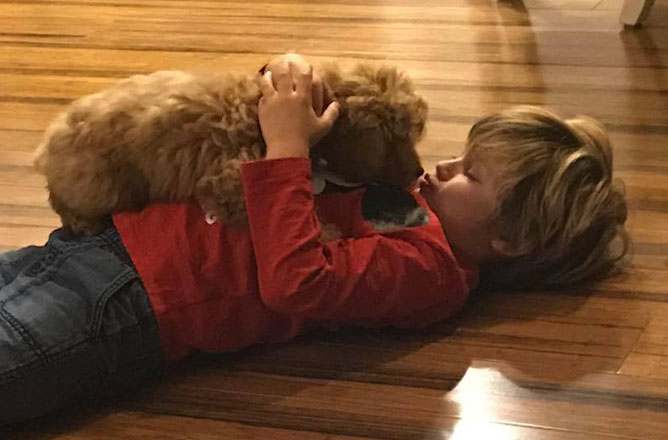
The Science Behind Allergy-Friendly Doodles
The key to understanding doodle allergenicity lies in a specific gene commonly known as the “furnishing gene.” This fascinating gene controls two crucial characteristics that directly impact allergy sufferers.
First, it creates the classic fluffy teddy bear look that makes doodles so recognizable and adorable. But more importantly for allergy sufferers, this same gene determines how much a doodle sheds. Doodles with furnishings have hair that continues growing throughout their lives (like human hair), requiring regular grooming and haircuts. In contrast, non-furnished breeds typically shed more but don’t need regular haircuts because their hair grows to a predetermined length and stops.
The furnishing gene directly correlates with reduced shedding, and less shedding means fewer allergy-causing proteins circulating in your home environment. This scientific understanding has revolutionized how responsible breeders approach doodle breeding for allergy sufferers.
Understanding the Furnishing Gene
The furnishing gene provides the scientific basis for predicting which doodle puppies will be most allergy-friendly. Understanding these genetic combinations helps families make informed decisions about their future companion.
When we test breeding dogs, we’re looking for specific genetic markers that predict coat characteristics. The results fall into three categories:
- F/F (Double Furnished): Maximum allergy-friendliness, minimal shedding
- F/IC (Single Furnished): Moderate allergy-friendliness, some offspring may shed more
- IC/IC (No Furnishings): Higher shedding, similar to non-poodle parent breeds
This genetic principle applies to all poodle crosses, including Goldendoodles, Mini Goldendoodles (smaller version with same genetics), Cavapoos (Cavalier King Charles Spaniel + Poodle), and CavaDoodles (Cavalier + Labrador + Poodle crosses).
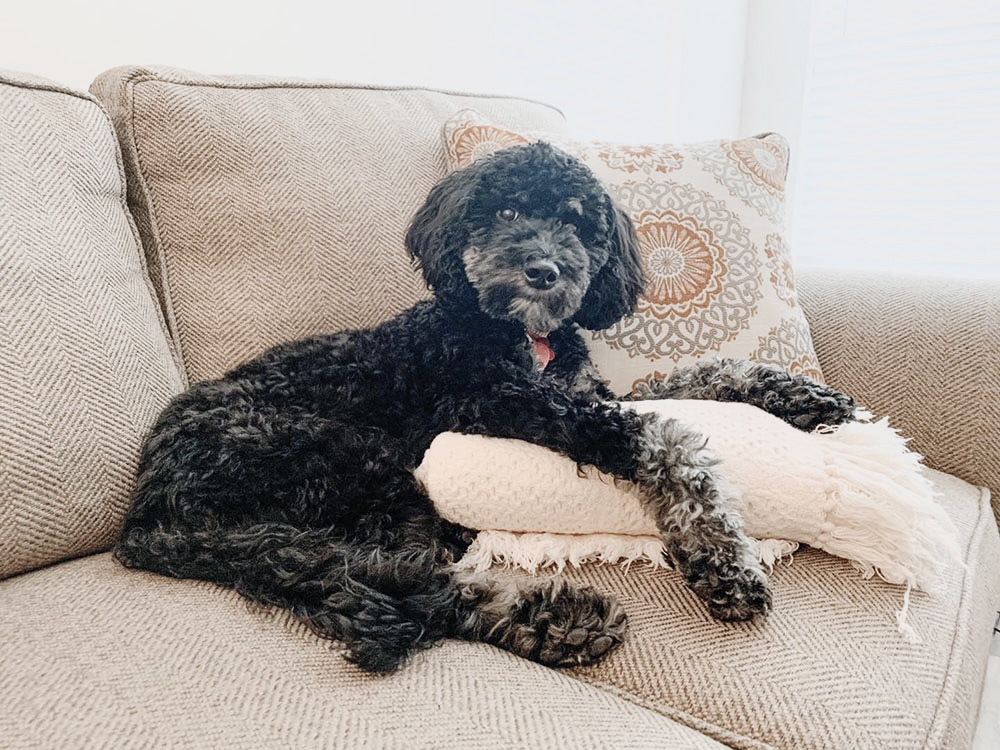
How Genetic Testing Predicts Hypoallergenic Coats
Modern doodle breeding uses genetic testing to eliminate guesswork and guarantee allergy-friendly coats. This scientific approach has transformed the predictability of doodle breeding for families with allergies.
Understanding F1 Doodle Genetics
First-generation doodles (F1) represent the exciting beginning of doodle breeding, crossing purebred parents to create wonderful family companions. When crossing a Golden Retriever with a Poodle, puppies inherit a mix of traits from both parents, which can include the Poodle’s low-shedding coat characteristics, the Retriever’s higher-shedding coat patterns, or various combinations of both parents’ traits.
While F1 doodles make excellent pets with hybrid vigor and wonderful temperaments, they are not the best choice for allergy sufferers due to coat unpredictability. With only about 25% chance for truly low-shedding characteristics, families with allergies face significant uncertainty. This natural genetic variation is part of what makes each F1 doodle unique, but creates challenges for those specifically seeking allergy-friendly companions.
Advanced Breeding Solutions
As one experienced doodle breeder explains: “A Goldendoodle must inherit two furnishing genes to have a non-shedding coat. This can happen by chance, but it is much easier to achieve using DNA and selective breeding.”
Many families request F1B doodles after reading they’re “best for allergies,” but this isn’t necessarily true. An F1B (F1 bred back to a Poodle, not a Retriever) might have two copies of furnishing genes, or might not – there’s still genetic uncertainty.
With multigenerational breeding using genetically tested parents, we can guarantee every puppy is double furnished. Through genetic testing and strategic selection, responsible breeders can now produce litters where every puppy has optimal allergy-friendly characteristics.
F1 vs. Multigenerational Doodles: Which is Better?
Multigenerational breeding has revolutionized doodle predictability for allergy sufferers. Instead of the genetic uncertainty of F1 crosses, experienced breeders now breed doodle to doodle using genetically tested parents.
When both parents carry double furnishing genes (F/F), 100% of offspring will inherit optimal allergy-friendly coats. This scientific approach eliminates the uncertainty that plagued earlier doodle breeding. The mathematical advantage is clear: F1 doodles offer a 25% chance of optimal allergy-friendly coat with excellent hybrid vigor and temperament, while our multigenerational approach provides nearly 100% chance of low-shed, allergy-friendly coats.
The truth many doodle breeders have discovered is simple: “If both parents carry two furnishing genes, then all offspring will inherit two furnishing genes.” This genetic certainty transforms doodle breeding from guesswork to science.
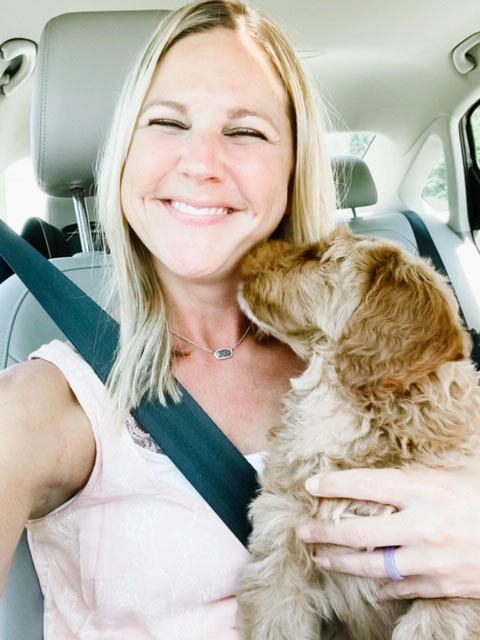
Real-World Results: Do Doodles Work for Allergies?
Scientific data and real-world experience both support the effectiveness of genetically tested doodles for allergy sufferers. The evidence comes from multiple sources and consistently shows positive outcomes.
Research demonstrates that over 80% of people with allergies report fewer symptoms with furnished coat breeds like poodles and well-bred doodle crosses. The key findings consistently show that furnished doodles shed significantly less than non-furnished dogs, reduced shedding directly correlates with fewer airborne allergens, and survey data from thousands of doodle owners shows overwhelmingly positive results.
Recent comprehensive surveys comparing different doodle breeds found that all quality bred doodle types received “Excellent” or “Very Good” ratings for hypoallergenic qualities. The data reveals a clear pattern: less shedding consistently equals fewer allergy problems. The real-world results speak for themselves – thousands of families with allergies are successfully living with genetically tested doodles.
What to Ask Your Doodle Breeder
Choosing the right breeder is crucial for finding a truly allergy-friendly doodle. The questions you ask can make the difference between success and disappointment.
Start with the most important question: “Do you genetically test your breeding dogs for furnishing genes?” Look for breeders who can confidently discuss F/F (double furnished) genetics. Next, ask “How many of your puppy families have allergies, and what has their experience been?” Reputable breeders track and share this data.
If a breeder cannot answer these questions or doesn’t perform genetic testing, continue your search. Genetic testing is neither expensive nor complicated – there’s no excuse for skipping this crucial step. For additional guidance on what to expect when bringing home a doodle, visit our Frequently Asked Questions page.
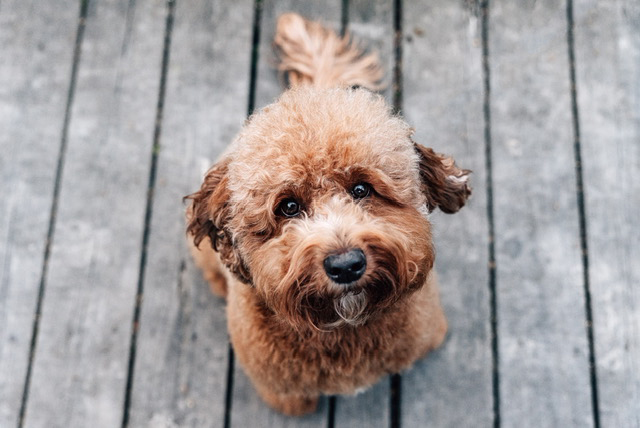
Our Breeding Program for Allergy-Friendly Coats
Our approach to breeding allergy-friendly doodles combines science with years of practical experience. We’ve developed a systematic process that ensures predictable results for families with allergies.
Our scientific process begins with comprehensive genetic testing – every breeding dog undergoes testing for furnishing genes and other relevant genetic markers. Through strategic selection over multiple generations, all our breeding dogs now carry two copies of furnishing genes (F/F). This creates guaranteed outcomes: when both parents are F/F, 100% of puppies will be double furnished with optimal allergy-friendly characteristics.
This isn’t guesswork – it’s breeding based on established genetics and predictable outcomes. Our commitment to genetic testing ensures every family receives a puppy with the coat characteristics they expect.
Managing Expectations: No Dog is 100% Hypoallergenic
Honesty is essential when discussing hypoallergenic dogs – no dog is completely allergen-free. Even the most carefully bred, genetically optimal doodle will still produce some allergens.
However, the combination of proper genetics, responsible breeding, appropriate care, and realistic expectations creates dogs that work successfully for many families with allergies. As someone who previously had reactions around most dogs, I now wake up every morning with at least one doodle in my bed. This transformation didn’t happen by accident – it resulted from understanding genetics and breeding specifically for these traits.
Success with hypoallergenic doodles requires several factors: working with breeders who perform genetic testing, maintaining proper grooming and home management, setting realistic expectations about allergen reduction (not elimination), and spending time with the specific dog before commitment.
If you have allergies and dream of dog ownership, don’t give up hope. With proper research, the right questions, and commitment to proper care, it really is possible.
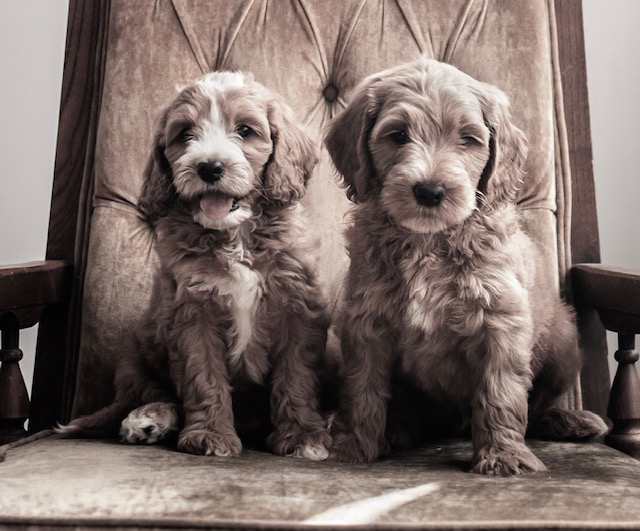
Frequently Asked Questions
Are doodles really hypoallergenic?
Yes, genetically tested doodles with double furnishing genes (F/F) are significantly more allergy-friendly than typical dogs. However, “hypoallergenic” means “less likely to cause reactions,” not “completely allergen-free.” Over 80% of people with allergies report fewer symptoms with genetically tested, low-shedding doodles.
What makes some doodles better for allergies than others?
The furnishing gene determines both appearance and shedding patterns. Doodles with double furnishing genes (F/F) shed minimally and produce fewer airborne allergens. This is why genetic testing is crucial – it predicts which puppies will have the most allergy-friendly coats.
Should I choose an F1 or multigenerational doodle for allergies?
Multigenerational doodles are significantly better for allergies. F1 doodles make wonderful family pets with excellent hybrid vigor and temperaments, but have only a 25% chance of optimal allergy-friendly coats due to natural genetic variation. Well-bred multigenerational doodles from F/F parents have nearly 100% predictability for low-shedding, allergy-friendly characteristics.
How can I tell if a doodle breeder does genetic testing?
Ask if they genetically test their breeding dogs for furnishing genes. Reputable breeders can confidently discuss F/F (double furnished) genetics and explain how genetics affect coat characteristics. If a breeder can’t discuss genetic testing knowledgeably, find another breeder.
Will a doodle definitely work for my specific allergies?
No dog is guaranteed to work for every person’s allergies. Individual sensitivity varies greatly. However, scientifically bred doodles with F/F genetics work successfully for the majority of families with allergies.
Do mini Goldendoodles and Cavapoos follow the same genetic principles?
Yes, all poodle crosses (Goldendoodles, mini Goldendoodles, Cavapoos, CavaDoodles) inherit the same furnishing gene patterns. Size doesn’t affect the genetics – a well-bred mini Goldendoodle with F/F genetics will be just as allergy-friendly as a standard size.
How much less do furnished doodles actually shed?
Doodles with double furnishing genes shed dramatically less than non-furnished dogs. While every dog sheds some hair, the difference is so significant that families consistently report minimal hair around their homes compared to traditional breeds.
Can children with allergies safely live with genetically tested doodles?
Many families with allergic children successfully live with genetically tested, F/F doodles. However, always consult with your child’s allergist before bringing any dog home.
Why don’t you use t-shirt tests like some other doodle breeders?
Some breeders offer t-shirt tests for an additional fee, where a specific puppy sleeps on a shirt for a period of time, then the shirt is mailed to you to wear and test for reactions. We don’t offer this service for a few reasons:
Why t-shirt tests can be misleading:
- The coat a puppy has is not the same as their permanent adult coat, so testing against a puppy coat doesn’t predict reactions to their future adult coat
- You might have no reaction to the puppy coat but develop allergies to the adult coat
- This could lead to heartbreaking rehoming situations after families have bonded
Our approach:
We believe in setting families up for long-term success rather than providing temporary assessments that may not reflect the dog’s adult allergen production. This protects both families and puppies from potential future compatibility issues.
Important Medical Disclaimer
I am not a medical doctor, allergist, or veterinary professional. This information represents personal experience as a dog breeder and educational content based on available research. This should not replace professional medical advice.
Before bringing any dog home, especially if you have serious allergies or asthma, consult with your doctor or allergist. Every person’s allergies are unique, and what works for many families may not work for your specific situation.
Always spend time with a dog before making a commitment, and ensure you understand any breeder’s policies regarding allergies. The research on hypoallergenic dogs continues to evolve as we learn more about genetics and allergen management.
Ready to find your allergy-friendly companion? Contact us to learn about our genetic testing process and upcoming litters. We specialize in helping families with allergies find their perfect doodle match through science-based breeding practices.
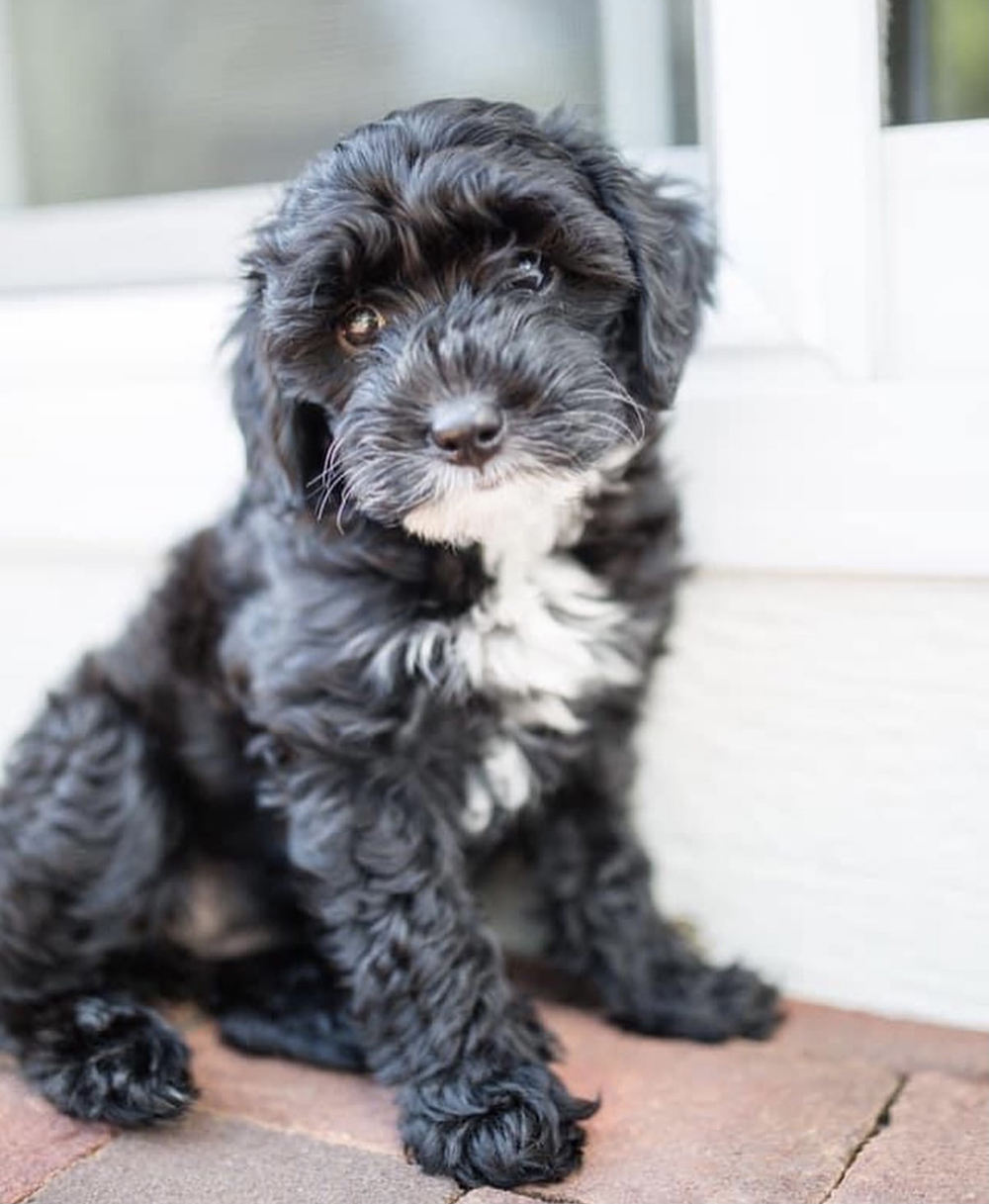
Sources and Citations
- Parker HG, et al. An insertion in the RSPO2 gene correlates with improper coat in the Portuguese water dog. J Hered. 2010.
- Cadieu E, et al. Coat variation in the domestic dog is governed by variants in three genes. Science. 2009.
- UC Davis Veterinary Genetics Laboratory. Furnishings and Improper Coat Testing.
- National Human Genome Research Institute. Dog coat genetics research.
- DoodleDoods Survey Data. Hypoallergenic Dogs: Let’s Compare Doodles With Data. 2024.
Related Articles
Finding the Best Doodle Breeder: A Complete Guide
Learn the essential questions to ask and red flags to avoid when choosing a responsible doodle breeder for your family.
Debunking Common Doodle Myths
Separate fact from fiction about doodles with evidence-based information that cuts through marketing hype and misconceptions.
3 Challenges Every Puppy Parent Faces (And How to Overcome Them)
Prepare for doodle ownership with practical solutions to the most common challenges new puppy families encounter.
